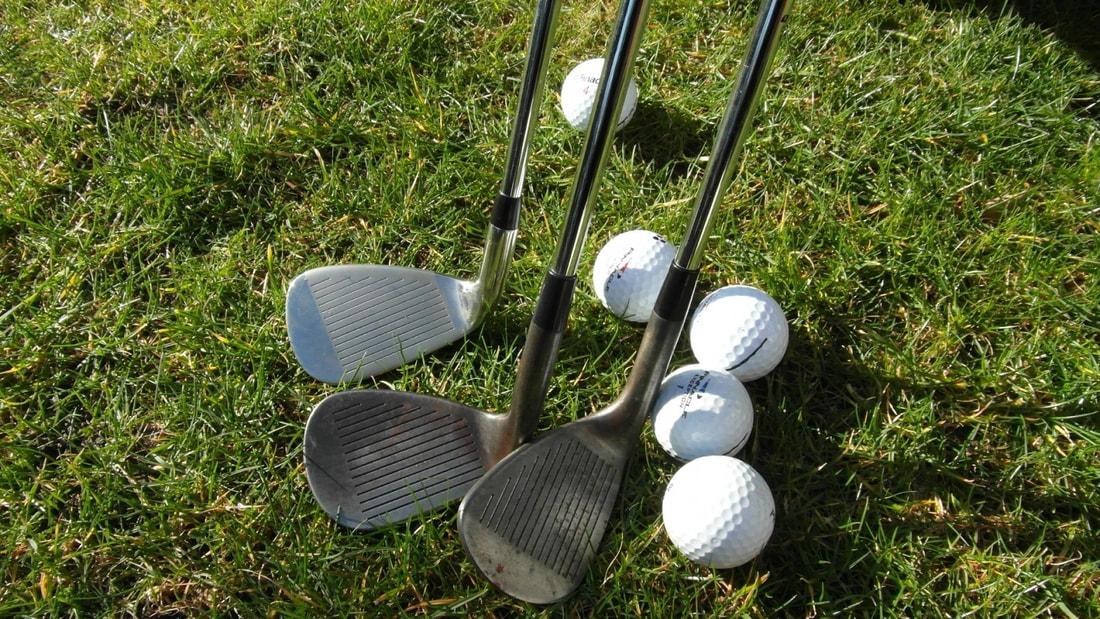|
You see there’s a big difference between just hitting buckets and buckets of golf balls hoping to get better, and practicing to improve your game. So let’s get the ball rolling right away by introducing you to a simple definition of golf practice that will help you to understand how you can improve your game; The purpose of golf practice is to perform golf strokes or execute specific golf training drills and routines repeatedly, in a deliberate manner, and on a consistent basis, in order to improve a specific skill set that can be transferred successfully to the golf course." Now I know that’s common sense but you would be surprised how many golfers just hit balls and hope that they will somehow miraculously discover improvement in their game. You can hope all you like, but it won't help because golf skill improvement requires a logical and well-thought out plan for you to improve. These 6 practice rules you must follow are guaranteed to improve your golf skills, and help you to transfer them successfully onto the golf course easier and faster. Rule 1. Know Your GameI'm sure every time you go for a lesson with a new coach, they ask you a little about your game, take a video of your swing, maybe compare you to a tour player, and then say you need to change this position or that feeling in your swing to improve your game. This is mostly always done without knowing much about your game at all. They might ask you what you believe are the areas you need to improve, but if you both don’t have the evidence to back it up, it’s all guesswork. For example, what percentage of putts from 1m to 4m do you make? What’s your proximity to the hole for pitch shots between 10m and 25m from the hole? What’s your percentage of up and downs for approach wedge shots between 30m and 60m from the hole? Rule 2. Have a Plan Each Time You PracticeOnce you have completed your game assessment, knowing what to focus on each time you go to practice becomes much clearer. Identify 2 to 3 of your weakest golf skills from your assessment. Improving these areas will guarantee better and more consistent results on the golf course. Now this won't be fun to do, but it is essential that you practice your weakest skills with the goal of upgrading them, because you know that this process with time will guarantee better and more consistent results on the golf course. Practicing your weakest 2 to 3 skills is the surest way to better and more consistent performances on the golf course. Rule 3. Become Aware Of Your EmotionsHow do you react when you play a bad shot? How do you react when you play a good shot? Next time you go to practice or play, have a friend or your coach observe your reactions (this can be done with video also) for both your good and bad shots. One of the biggest influences on performance is our mental and physical reactions we make to outcomes in practice and play, and as golfers we are great at feeding our negative thoughts and feelings. Over time, this can be game killer. Start to become aware of your emotional reactions, and become a happier and more positive golfer. Rule 4. Know What You Want and Start Getting ItIf l asked you to not think about elephants, what pops into your head? Elephants right! This is exactly the same scenario when you stand on the tee and tell yourself don’t hit it in the water, or the bunker, or O.B. Then we do exactly that. Our brains only focus on the key word that we are trying to avoid, it deletes the ‘don’t part. Therefore most of time giving us what we didn’t want to happen. The more you start asking yourself what you truly want, the more often you will start getting it. Rule 5. Pressure Proof Your GameHow often do you hit the ball great on the range, can’t miss a putt on the practice green, then go out to the course and play the complete opposite? If you’re like most golfers, you probably get a bucket of balls and start hitting shots one after the other with your favourite clubs, or drop 3 balls on the green and hit putts from the same place to the same hole. Ask yourself, do you perform your pre shot routine in practice as you do on the course? Do you get 10 balls for a particular club, setup a target to hit through, then set a goal to achieve?Do you practice your short game with one ball and set yourself a target of getting up and down from different positions with different clubs more than 50% of the time? Start testing your game under pressure in practice, then start performing under pressure on the course. Rule 6. Short Game! Short Game! Short Game!If you really want to shoot lower scores faster, l can’t stress enough how important it is to develop your short game, or what we call ‘backup systems’ Professionals will spend at least 70% of their practice time on the short game, 30% on the full swing. Amateurs do the opposite. You might ask “but pros swing it much better than l do”, and that’s a legitimate question. 70% of shots during your round (it’s the same for pro’s and amateurs) are played from 100m to the hole. So it makes sense to practice your putting, chipping, pitching, lob, bunker, and trouble shots 70% of the time. You’re probably thinking that practicing the short game is boring, but thats because you’re always practising it the same way expecting a different result. Refer to Rule 5. If you really want to lower your scores consistently, the 6 practice rules cannot be broken, bent, or neglected. They are non-negotiable.
There are no short cuts to shooting lower scores, but knowing how to get there will save you a lot of pain and frustration. Follow the 6 rules, and you will start getting what you want! Good golfing. Pro Tour Golf College
Breanna
30/5/2018 07:40:02 am
Really good article Lawrie, the last couple years, when working with a new coach, I've booked an extra hour of their time so the first hour can be spent just talking and giving them an understanding of where I'm at, where my deficiencies are and what I'm trying to achieve before we even go and look at the swing. I feel that helps give them a better understanding of my personality traits aswell. Comments are closed.
|
Archives
June 2019
|
Proudly Supported By
Copyright © 2011 - 2018 Pro Tour Golf College
Website Managed By Golf Performance Media
All Rights Reserved
Website Managed By Golf Performance Media
All Rights Reserved









 RSS Feed
RSS Feed



